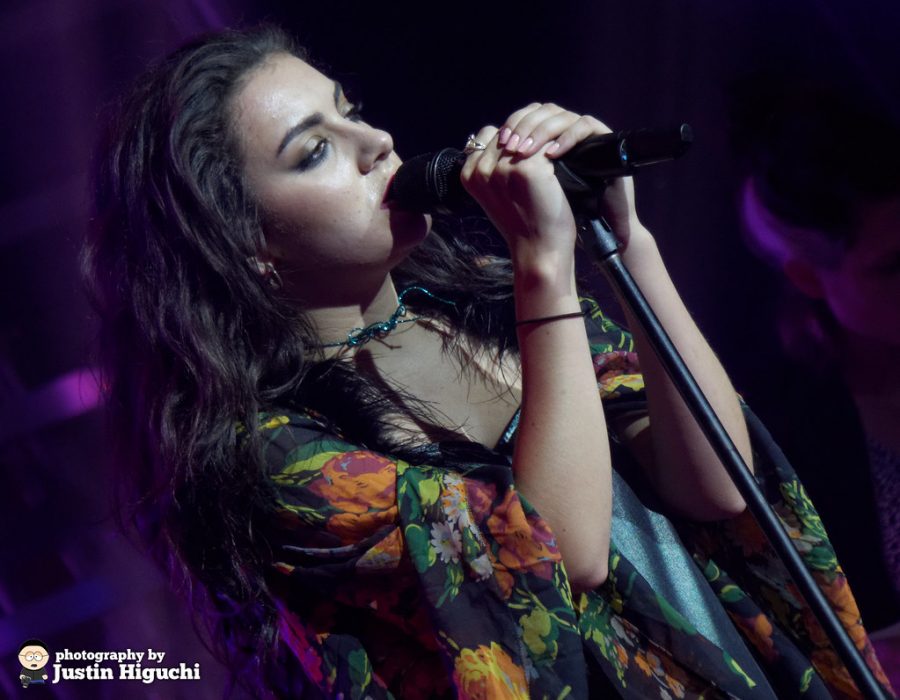Art in Quarantine
Photo Credit: Charli XCX
via jus10h
December 15, 2020
The current pandemic can feel like a heavy cloud looming over us, an insidious plague from which we must perpetually shield our mouths and noses, but it has also been an unexpected source of inspiration for quite a few artists. Take, for instance, pop star Charli XCX. The British singer began using public Zoom calls in early March to share with her fans the entire creation process of a new album. In a month, Charli wrote and recorded 11 new songs, documenting every step live from her home in Los Angeles. how i’m feeling now is an aptly named snapshot of Charli’s thoughts and emotions during this highly uncertain period. The songs are nostalgic for a more joyful pre-coronavirus time, but the mood is generally optimistic. Despite life’s trials, Charli remains positive, as she sings on the song “7 years”: “So hard, the things that we’ve been through / Could’ve fallen but we’ve only grew.”
In this way (and in many others), Charli XCX could not be more different than the Spanish Romantic painter Francisco Goya. Around 1819, Goya’s home country was still suffering from the effects of the Napoleonic Wars. Goya himself was an old man, nearly deaf, and excruciatingly aware that he was approaching the end of his life. Surrounded on all sides by deterioration and decay, Goya retreated to the ironically-named Deaf Man’s Villa and spent the next few years covering the walls in paintings that range from bleak to downright disturbing. They’re called the Black Paintings, and they’re pretty cool. The most famous of these works, “Saturn Devouring His Son”, compels the viewer to stare into the desperate, horrified eyes of a ragged old man gnawing away at his son’s corpse. The other thirteen paintings are just as cheerful. Like Charli XCX, Goya created his art in total isolation, constructing an incredibly intimate portrait of his mindset. However, the tone could not be any more different. For one thing, Charli deliberately made her album’s creation as collaborative and joyful as possible, wanting her fans to not only consume the final product, but to be involved in its formation. Conversely, Goya saw his art as a purely solitary venture. Art historian Fred Licht commented that the paintings “are as close to being hermetically private as any that have ever been produced in the history of Western art.” Perhaps this is the fundamental difference between these artists: one retreated from community, and one actively sought it out.
When Canadian musician Grimes locked herself in her dark Montreal apartment, barely eating or sleeping for nine days straight, it wasn’t because of societal or personal turmoil. She just had a strict deadline, and she had procrastinated. In an awe-inspiring feat of cramming, Grimes, fueled by nothing but amphetamines and sheer will, made an album in barely over a week. Visions was acclaimed as one of the best albums of 2012 by NME, Rolling Stone, and The Guardian, and it’s safe to say that Grimes’ self-imposed quarantine was a major reason. Everything from the cover art to the lyrics paints a picture of a woman essentially losing her mind, descending into abstraction as she sweetly chants on “Genesis”: “My heart, I never be, I never see, I never know.” Slant Magazine describes the album as “an intimate glimpse into the fantasies of its creator,” a spectacle without any artifice.”
This is the common thread between Goya, Charli XCX, and Grimes. Whether because of a global pandemic, civil unrest, or simple procrastination, artists in isolation can drop all pretense and truly reflect on their own deepest fears, desires, and fantasies. These could be joyful, terrifying, or confusing, but they’re always authentic.
